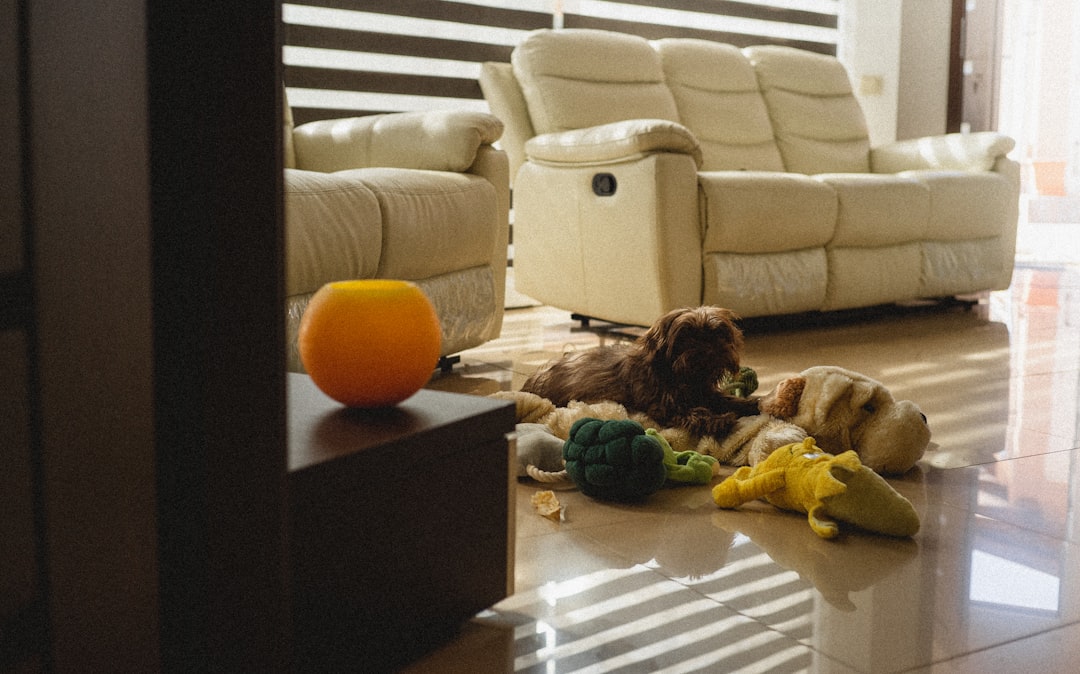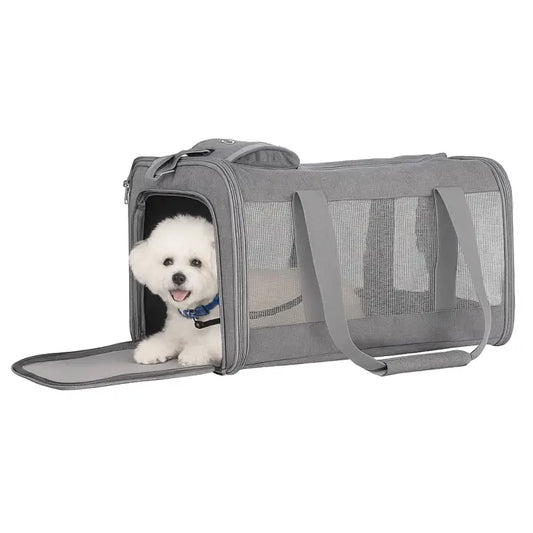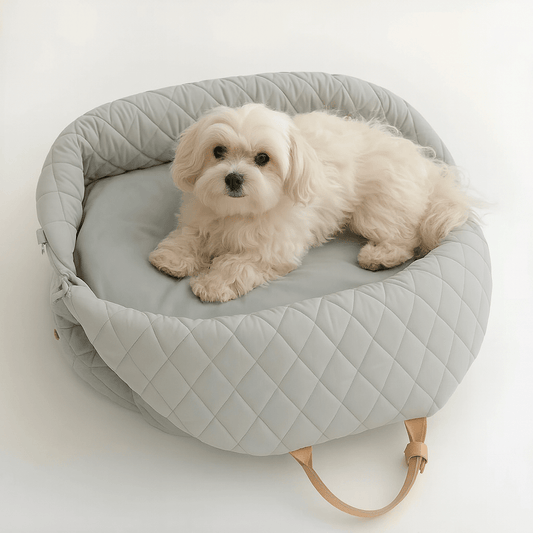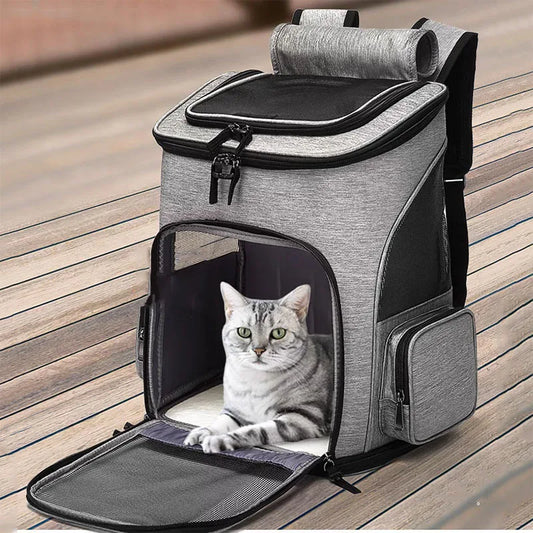
No More Chewed Shoes: Home Training for Destructive Dogs
Share
Pet owners often face a common problem: damage caused by their pets. Whether it's a playful puppy or a mischievous cat, pets can wreak havoc on our homes, destroying furniture, carpets, and more. The issue of pet damage prevention is crucial for maintaining a safe and comfortable living environment.
Understanding the importance of home protection is key. By taking proactive steps, you can safeguard your belongings and reduce the risk of costly repairs. In this article, we'll explore practical tips to help you protect your space from the destructive tendencies of your pets.
Key Takeaways
- Understand why pets engage in destructive behavior
- Learn effective strategies for pet damage prevention
- Discover ways to safeguard your home and belongings
- Implement practical tips for maintaining a pet-friendly home
- Explore solutions for minimizing costly repairs
Understanding Why Pets Chew and Destroy
Pets' destructive behavior, including chewing, is a multifaceted issue that stems from various underlying causes. To address the problem effectively, it's essential to understand why pets engage in such behavior.
Natural Instincts Behind Destructive Behavior
Many pets exhibit destructive behavior due to their natural instincts. For example, dogs have an innate tendency to chew, which helps them explore their environment and relieve teething pain.
Age-Related Chewing Patterns
The age of a pet significantly influences its chewing behavior. Puppies, for instance, chew more due to teething, while older pets might chew due to dental issues or boredom.
Stress and Anxiety Triggers
Stress and anxiety are common triggers for destructive behavior in pets. Changes in the environment, such as moving homes or introducing new pets, can cause stress.
Boredom and Lack of Stimulation
Pets left without adequate stimulation or exercise may resort to destructive behavior. Providing adequate playtime and mental stimulation can mitigate this issue.
| Reason | Description | Potential Solution |
|---|---|---|
| Natural Instincts | Pets explore and relieve discomfort through chewing. | Provide appropriate chew toys. |
| Age-Related Chewing | Teething in young pets; dental issues in older pets. | Regular dental check-ups; age-appropriate toys. |
| Stress and Anxiety | Environmental changes cause stress. | Gradual introduction to changes; calming aids. |
| Boredom | Lack of stimulation leads to destructive behavior. | Regular exercise; interactive toys. |
Different Pets, Different Destruction Patterns
Understanding the diverse destruction patterns of different pets is crucial for pet owners. Various pets exhibit unique behaviors that can lead to different types of destruction in the home.
Dogs: From Puppies to Adults
Dogs, especially during their puppy phase, tend to chew on a variety of objects, from furniture to shoes. As they mature, some dogs continue to exhibit destructive behaviors if not properly trained.
Cats and Their Scratching Needs
Cats are notorious for their scratching behavior, which can damage furniture and carpets. Providing appropriate scratching posts can help redirect this behavior.
https://www.youtube.com/watch?v=-fC1RM-RIJg
Small Pets: Rabbits, Guinea Pigs, and Rodents
Small pets like rabbits and guinea pigs often chew on wood and other materials, potentially damaging their cages and surroundings.
Birds and Their Chewing Habits
Birds are known to chew on various objects, including wood and fabric. Providing them with appropriate toys can help minimize destruction.
| Pet Type | Common Destruction Patterns | Prevention Tips |
|---|---|---|
| Dogs | Chewing on furniture and shoes | Provide chew toys, train regularly |
| Cats | Scratching furniture and carpets | Use scratching posts, trim nails regularly |
| Small Pets | Chewing on cages and surroundings | Provide appropriate chew toys, secure cages |
| Birds | Chewing on objects and fabrics | Offer bird-safe toys, rotate toys regularly |
Protecting Your Furniture from Damage
When it comes to safeguarding your home's furniture from pets, a multi-faceted approach is often the most effective. Pets, especially dogs and cats, can be quite destructive, and their natural instinct to chew and scratch can lead to significant damage to your furniture.
Furniture Covers and Protectors
One of the simplest ways to protect your furniture is by using covers and protectors. These can be especially useful for sofas and armchairs that are prone to scratching and chewing. Slipcovers made from durable, pet-friendly materials can be a great investment. They are easy to clean and can be removed when you have guests.
Deterrent Sprays for Upholstery
Another effective method is using deterrent sprays on your upholstery. These sprays have a bitter taste that deters pets from chewing on the furniture. It's a non-toxic and safe way to protect your furniture. Make sure to choose sprays that are specifically designed for use on furniture.
Strategic Furniture Arrangement
Rearranging your furniture can also help minimize damage. By creating pathways and leaving enough space for your pets to move around, you can reduce the likelihood of them scratching or chewing on your furniture.
Creating No-Go Zones
Designating certain areas as no-go zones can help protect your furniture. Use pet gates or barriers to restrict access to rooms or specific pieces of furniture that you want to protect.
Furniture Materials to Avoid
When choosing furniture, it's essential to consider the materials used. Some materials, like velvet or loose-weave fabrics, are more prone to damage than others. Opting for pet-friendly materials like leather or microfiber can make a big difference.
Safeguarding Electrical Cords and Electronics
To maintain a safe and pet-friendly home, it's crucial to secure electrical cords and electronics. Pets, especially those with a chewing habit, can easily damage cords and electronic devices, leading to electrical hazards or even fires.
Cord Management Solutions
Effective cord management is key to preventing pets from accessing electrical cords. This can be achieved by using cord organizers or cable ties to keep cords tidy and out of reach.

Protective Coverings for Wires
Using protective coverings for wires is another effective method. These coverings are designed to be chew-resistant, protecting both the cord and your pet.
Pet-Safe Cable Organization
Pet-safe cable organization systems are designed to keep cords and cables organized while preventing pets from chewing on them. These systems often include secure fastening options to keep cables in place.
Securing Entertainment Centers
Securing entertainment centers and other electronic devices is also crucial. This can be done by anchoring the furniture to the wall to prevent it from tipping over if a pet tries to climb or chew on it.
| Method | Description | Effectiveness |
|---|---|---|
| Cord Organizers | Keep cords tidy and out of reach | High |
| Protective Coverings | Chew-resistant coverings for wires | High |
| Cable Organization Systems | Secure and organized cable management | High |
| Securing Furniture | Anchor furniture to prevent tipping | High |
Preventing Damage to Walls, Floors, and Baseboards
Pets can be destructive, but with the right strategies, you can safeguard your walls, floors, and baseboards. Protecting these areas not only preserves the aesthetic appeal of your home but also reduces the financial burden of frequent repairs or replacements.
Wall Guards and Corner Protectors
One effective way to protect your walls is by installing wall guards and corner protectors. These barriers absorb impact and prevent scratches and dents, especially in high-traffic areas or where pets tend to play or scratch.
- Wall guards come in various materials, including plastic and foam, offering flexibility in design and functionality.
- Corner protectors are particularly useful as they cover the most vulnerable parts of your walls.
Pet-Safe Paints and Finishes
Using pet-safe paints and finishes is another strategy to minimize damage. These products are designed to be more resistant to scratches and easier to clean, reducing the impact of pet-related wear and tear.
Temporary Barriers for Problem Areas
For areas that are particularly prone to damage, setting up temporary barriers can be an effective short-term solution. Baby gates or pet gates can redirect your pets' movement, protecting sensitive areas.
Flooring Options That Resist Pet Damage
When it comes to flooring, choosing pet-friendly options can make a significant difference. Materials like hardwood, laminate, or tile are more resistant to pet damage compared to carpet. Additionally, these surfaces are easier to clean and maintain.
- Hardwood flooring is durable and can withstand pet accidents if properly sealed.
- Laminate flooring offers a cost-effective alternative with a variety of designs.
- Tile flooring is highly resistant to moisture and easy to clean, making it ideal for pet owners.
Chewing and Destruction at Home: Common Targets and Solutions
Pets often target everyday items for chewing and destruction, but there are ways to protect your home. Understanding what attracts pets to certain items can help you take preventive measures.
Shoes and Personal Items
Many pets view shoes as toys, likely due to their texture and the owner's scent. To protect your shoes, consider storing them in closed closets or using deterrent sprays on them. You can also provide your pet with their own toys that are similar in texture to your shoes.
Books and Paper Products
Pets often enjoy shredding paper products, including books. Keeping these items out of reach is crucial. Use pet-safe storage for books and papers, and consider providing your pet with paper-based toys or alternatives like cardboard boxes.
Children's Toys
It's ironic that pets often target children's toys, but this can be due to the toys' similarity in texture to the pets' own toys. Supervising playtime and ensuring that children's toys are stored away when not in use can help. Providing pets with their own durable toys can redirect their attention.
Remote Controls and Small Electronics
Pets are often attracted to remote controls and small electronics due to their shape, size, and the sounds they make. Securing these items out of reach and using cord protectors can prevent damage. Offering pets appropriate alternatives, like interactive toys, can also help.
Plants and Garden Materials
Pets may chew on plants and garden materials due to their natural instinct to explore their environment through taste and smell. Keeping plants out of reach and using pet-safe gardening materials can mitigate this. Providing pets with safe alternatives, like cat grass, can satisfy their urge to graze.
By understanding the common targets of pets' chewing and destruction, you can take steps to protect your home. Implementing these solutions can help redirect your pet's behavior towards more appropriate items.
Creating Pet-Safe Zones in Your Home
Establishing pet-safe zones in your home can significantly reduce the risk of damage caused by pets. By designating specific areas for play, rest, and other activities, you can create a harmonious living environment.
Designated Play Areas
Creating designated play areas is crucial for keeping your pets engaged and directing their energy away from valuable items. These areas should be equipped with pet-friendly toys and scratching posts.
Effective Use of Pet Gates and Barriers
Pet gates and barriers are effective tools for restricting access to certain areas of your home. They help in keeping your pets away from rooms or items you want to protect.
Crate Training Benefits
Crate training provides your pets with a safe space of their own, reducing anxiety and preventing destructive behavior when you're not around to supervise.
Outdoor Spaces for Energy Release
Utilizing outdoor spaces can be an excellent way to let your pets release pent-up energy. Ensure these areas are securely fenced and safe for your pets to roam.
| Pet-Safe Zone | Benefits | Tips for Implementation |
|---|---|---|
| Designated Play Areas | Reduces damage to furniture and belongings | Equip with pet-friendly toys and scratching posts |
| Pet Gates and Barriers | Restricts access to off-limits areas | Choose sturdy gates that fit your doorway |
| Crate Training | Provides a safe space for pets, reduces anxiety | Introduce the crate gradually, make it comfortable |
| Outdoor Spaces | Allows for energy release, exercise | Ensure the area is securely fenced, provide shade and water |
Environmental Enrichment to Prevent Boredom
To keep pets engaged and prevent boredom, environmental enrichment is key. Pets, especially those left alone for extended periods, need stimulation to prevent destructive behavior. By incorporating various enrichment strategies, pet owners can create a more engaging and stimulating environment.
Rotating Toy Collections
One effective way to keep pets engaged is by rotating their toy collections regularly. This can be done by storing some toys and reintroducing them after a few days, making the toys seem new again. Rotating toys not only reduces boredom but also keeps pets interested in their environment. For example, swapping out chew toys or interactive puzzle toys can provide mental stimulation and prevent destructive chewing.
Puzzle Feeders and Treat Dispensers
Puzzle feeders and treat dispensers are excellent tools for providing mental stimulation. These devices challenge pets to figure out how to get their food or treats, keeping them engaged and stimulated. Using puzzle feeders can slow down eating and make mealtime more engaging. They come in various difficulty levels, making them suitable for different ages and breeds of pets.
Creating Sensory Experiences
Creating sensory experiences is another way to enrich a pet's environment. For dogs, this can include scent work or hiding treats around the house. For cats, it might involve creating a "cat agility" course or providing different textures for scratching. Sensory experiences can significantly reduce boredom and stress in pets.
Scheduled Play and Exercise Routines
Establishing scheduled play and exercise routines is crucial for preventing boredom. Regular physical activity and playtime can help burn off excess energy and keep pets engaged. A tired pet is a happy pet, as the saying goes. Scheduling daily play sessions can help maintain a pet's physical and mental health.
By implementing these environmental enrichment strategies, pet owners can significantly reduce boredom and destructive behavior in their pets. As noted by pet behaviorists, "A stimulated pet is a happy pet." Creating a stimulating environment is not just about preventing boredom; it's about enhancing the overall quality of life for pets.
"A stimulated pet is a happy pet." - Pet Behaviorist
Training Techniques to Reduce Destructive Behavior
Understanding and applying appropriate training strategies can help minimize pet destruction. Training your pet is not just about teaching them tricks; it's about establishing a bond and setting boundaries that prevent unwanted behavior.
Positive Reinforcement Methods
One of the most effective training techniques is positive reinforcement. This involves rewarding your pet for good behavior, thereby encouraging them to repeat it. Rewards can be in the form of treats, praise, or playtime. For instance, when your pet calmly uses a scratching post instead of your furniture, rewarding them reinforces this positive behavior.
Redirection Strategies
Redirection is another powerful tool. It involves diverting your pet's attention from destructive activities to more acceptable ones. For example, if you catch your dog starting to chew on a shoe, you can redirect their attention to a chew toy. Consistency is key in making redirection effective.
Consistency in Training Approaches
Consistency in training is crucial. It ensures that your pet understands what is expected of them. Inconsistent training can confuse pets and lead to continued destructive behavior. Everyone in the household should be on the same page regarding training methods and rules.
When to Seek Professional Help
Sometimes, despite your best efforts, your pet's destructive behavior persists. This is when seeking professional help becomes necessary. Professionals can offer tailored advice and training plans.
Working with Animal Behaviorists
Animal behaviorists are experts in understanding pet behavior. They can identify underlying causes of destructive behavior and suggest specific training techniques to address them.
Training Classes for Destructive Pets
Enrolling your pet in training classes can also be beneficial. These classes not only teach pets new behaviors but also provide owners with valuable insights into how to manage destructive tendencies.
Managing Destruction During Life Changes
Life changes can be challenging for pets, leading to destructive behavior. As pets adjust to new circumstances, they may exhibit destructive actions due to stress, anxiety, or boredom.
New Pets and Adjustment Periods
Introducing a new pet to your household can be a significant change for both the new pet and existing pets. To minimize destruction, it's essential to provide a smooth transition by maintaining a consistent routine and providing separate spaces for each pet.
Moving to a New Home
Moving to a new home can be stressful for pets, leading to destructive behavior. To mitigate this, it's crucial to maintain familiar surroundings and routines. Bringing familiar items like your pet's bed or favorite toys can provide comfort in the new environment.
Changes in Household Members
Changes in household members, such as a new baby or a roommate, can cause pets to feel insecure or jealous, leading to destructive behavior. Ensuring that your pet receives adequate attention and maintaining a consistent routine can help alleviate this stress.
Seasonal Behavior Changes
Seasonal changes can also impact your pet's behavior. For example, increased noise during holidays or changes in your work schedule during summer can cause stress. Being aware of these changes and preparing your pet in advance can help minimize destructive behavior.
| Life Change | Potential Pet Reaction | Mitigation Strategy |
|---|---|---|
| New Pet | Destructive behavior due to jealousy or competition | Maintain consistent routine, provide separate spaces |
| Moving Home | Stress and anxiety leading to destruction | Bring familiar items, maintain familiar routines |
| Changes in Household Members | Insecurity or jealousy causing destructive behavior | Ensure adequate attention, maintain consistent routine |
Conclusion
Understanding and addressing pet destruction is crucial for maintaining a harmonious and safe living environment. By recognizing the natural instincts behind your pet's behavior, you can take proactive steps to prevent damage to your home.
Implementing pet damage prevention strategies, such as securing electrical cords, using deterrent sprays on furniture, and creating pet-safe zones, can significantly reduce destruction. Additionally, providing environmental enrichment through puzzle feeders, sensory experiences, and scheduled play can curb destructive tendencies.
Effective home protection tips include rearranging furniture to minimize access to vulnerable areas, utilizing wall guards, and opting for pet-friendly materials. Training techniques, such as positive reinforcement and redirection, play a vital role in shaping your pet's behavior and preventing unwanted destruction.
By combining these approaches, you can create a balanced and enjoyable living space for both you and your pets. With patience, consistency, and the right strategies, you can minimize pet-related damage and foster a happy, healthy home environment.
FAQ
Why do pets chew and destroy things at home?
Pets chew and destroy things due to natural instincts, age-related patterns, stress and anxiety triggers, and boredom. Understanding these reasons can help you address the issue effectively.
How can I protect my furniture from pet damage?
You can protect your furniture by using furniture covers and protectors, deterrent sprays for upholstery, and strategic furniture arrangement. Creating no-go zones and avoiding certain furniture materials can also help.
What are some effective ways to safeguard electrical cords and electronics?
To safeguard electrical cords and electronics, use cord management solutions, protective coverings for wires, and secure entertainment centers. Pet-safe cable organization can also prevent electrical hazards.
How can I prevent damage to walls, floors, and baseboards?
Use wall guards and corner protectors, pet-safe paints and finishes, and temporary barriers for problem areas. Flooring options that resist pet damage can also be effective.
What are some common targets of pets' chewing and destruction, and how can I protect them?
Common targets include shoes, books, children's toys, remote controls, and plants. You can protect these items by using deterrents, redirecting your pet's attention, and securing them out of reach.
How can I create pet-safe zones in my home?
Create designated play areas, use pet gates and barriers effectively, and consider crate training. Utilizing outdoor spaces for energy release can also help.
What are some environmental enrichment strategies to prevent boredom?
Rotate toy collections, use puzzle feeders and treat dispensers, create sensory experiences, and establish scheduled play and exercise routines to keep your pet engaged and stimulated.
What training techniques can reduce destructive behavior in pets?
Use positive reinforcement methods, redirection strategies, and consistency in training approaches. If needed, seek professional help from animal behaviorists or enroll in training classes.
How can I manage destruction during significant life changes?
When introducing new pets, moving to a new home, or experiencing changes in household members, help your pet adjust by maintaining a consistent routine and providing a stable environment.
Are there any specific products that can help protect my home from pet destruction?
Yes, there are various products available, such as furniture covers, cord protectors, and pet gates, that can help protect your home from pet destruction. Research and choose products that suit your pet's needs and your home's layout.







